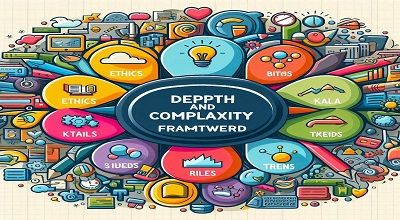Kaplan’s Depth And Complexity Chart
Kaplan’s Depth and Complexity Chart is an educational framework designed to enhance students’ critical thinking skills. By providing a structured approach to exploring and analyzing content across various subjects. Developed by educational psychologist Sandra Kaplan, this framework offers a set of prompts, or “thinking tools.” That encourages students to delve deeper into the complexities of a topic, fostering a more profound understanding.
The Depth and Complexity Chart comprises eleven elements, categorized into two main dimensions: depth and complexity. The depth dimension focuses on going beyond surface-level information. While the complexity dimension emphasizes examining the intricate aspects of a subject. Here is a brief overview of some key elements in each dimension:
Depth Dimension:
- Details: Encourages students to zoom in on specific aspects and gather more information about the topic.
- Patterns: Involves identifying recurring themes or trends within the subject matter.
- Rules: Prompts students to identify and understand the rules or principles governing the topic.
Complexity Dimension:
- Multiple Perspectives: Encourages students to consider various viewpoints and understand that issues may have more than one side.
- Change Over Time: Explores the historical or chronological aspects of the topic, helping students understand how things evolve.
- Ethical Considerations: Prompts students to analyze the moral and ethical implications associated with the subject matter.
These elements are presented in a chart format, allowing educators to integrate them into lesson plans and curriculum design. Teachers can use these prompts to guide discussions and assignments. Projects, encourage students to think critically and engage with content in a more sophisticated manner.
The Depth and Complexity Chart is applicable across disciplines, making it a versatile tool for educators in various subjects. It can be used to enhance classroom discussions, deepen students’ understanding of content, and promote higher-order thinking skills. By incorporating these thinking tools, educators aim to move beyond rote memorization. Encourage students to analyze, synthesize, and evaluate information in a more meaningful way.
Summary
In summary, Kaplan’s Depth and Complexity Chart provides a framework for educators to scaffold. Enhance students’ thinking skills by guiding them to explore the depth and complexity of a subject. It serves as a valuable resource for promoting critical thinking and intellectual engagement in the classroom.
